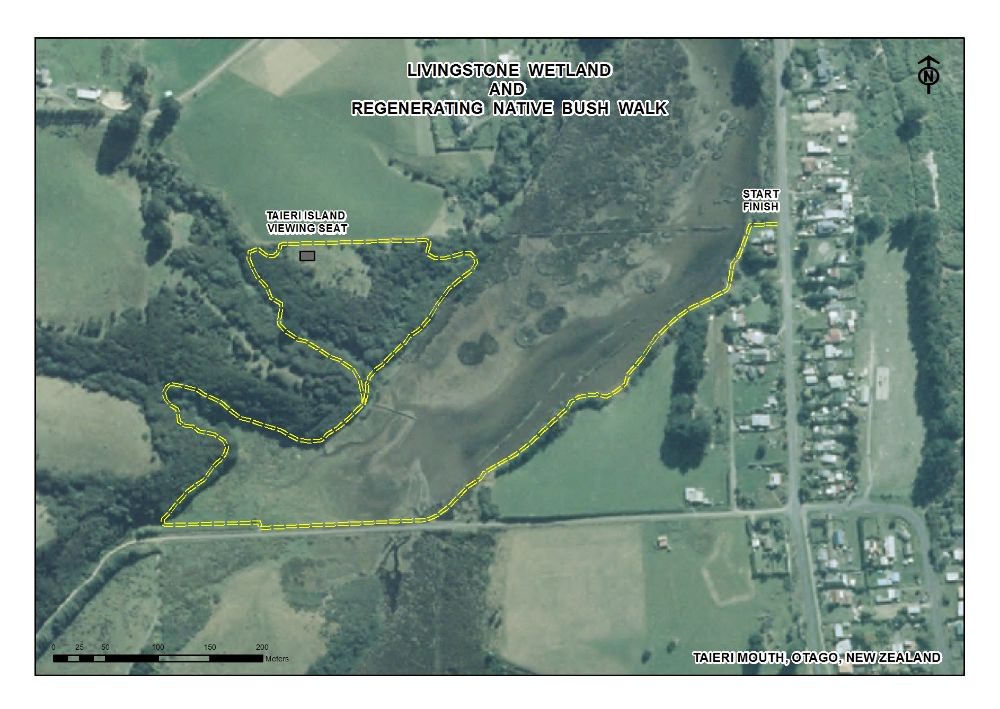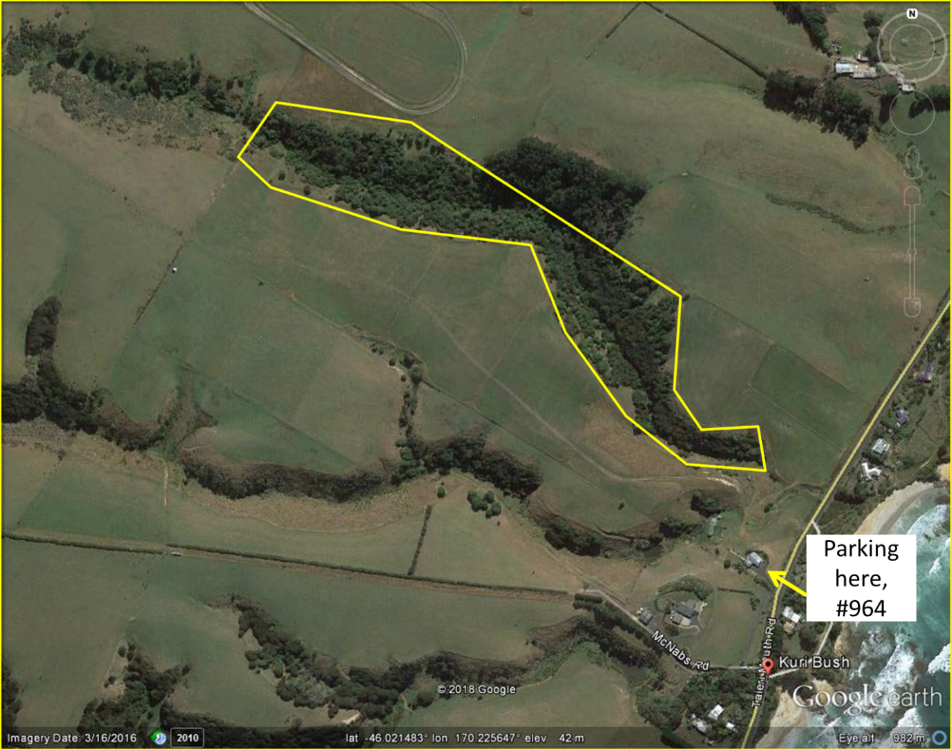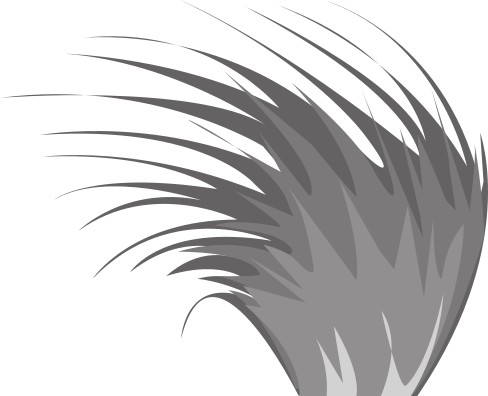Past Events
Talk / Seminar on Wednesday 8th of May 2019, 05:20 PM (6 years ago)
Contact: Gretchen Brownstein
The photographic competition is a popular and eagerly anticipated event for anyone interested in botanical photography. Enter your best photos and learn what makes a good photograph and how to improve your photographic skills from our panel of expert judges. Your photographs may be chosen for the BSO calendar so this is your opportunity to have one month of fame. Start organising your entries now and don't wait until the last minute.
We will hold the AGM prior to the photography discussion. Please read the minutes of the last meeting and Chairs and treasurers reports.
Field Trip on Saturday 27th of April 2019, 09:00 AM (6 years ago)
Contact: Gretchen Brownstein
This is a family run restoration project of a the wetland and forest remnant. The project has been going a number of years now and been quite a bit of success with reforestation, increased birdlife and pest eradication. Recently they hosted the bird watching society who assisted them greatly with a bird count and a list of birdlife in the wetland and native bush. Now the Greens have asked the BSO to help create a plant species list for the native bush. We will spend the day exploring the tracks around the bush and wetland to compile a species list. Meet at Botany Department carpark at 9am. Contact Gretchen Brownstein 021 065 8497 or brownsteing@landcareresearch.co.nz.

Talk / Seminar on Wednesday 10th of April 2019, 05:20 PM (6 years ago)
Contact: Gretchen Brownstein
Speaker: Maia Mistral.
Willows introduced to New Zealand can be subject to bad press. Often neglected in the debate are willow species that humans have depended upon for centuries for their high utility values. One such group of willows selected over time specifically for their flexibility and amenability to cultivation are referred to collectively as basket willows. For those interested in learning willow basket making or considering it as a vocation, a lack of access to suitable willow can be a major barrier to progress. In fact, securing a reliable supply of raw material has been an ongoing concern even amongst professional willow basket makers who first began to work in New Zealand from the mid-19th century. This talk will use insights from the past to discuss the relative value of importation, wild harvesting and traditional coppice management of selected basket willow varieties as pathways for securing material supplies in the future.
Field Trip on Saturday 16th of March 2019, 09:00 AM (6 years ago)
Contact: David Lyttle | djl1yttle@gmail.com | (03) 454 5470
We will start off at Smaills Beach where we will look at dune and coastal vegetation. We will then go to the top of the Karetai Track where there is an extensive area of Veronica elliptica shrubland and associated coastal plants including Linum monogynum, Pimelea prostrata, Samolus repens and Epilobium komarovianum. This is your chance to see some spectacular coastal and clifftop scenery. Depending on the time available there is the potential to visit several other sites. We shall return to Centre Road where we will look at a newly intitiated conservation planting project on a piece of fenced bush on the property of Mr Donald Lyttle.
Following the field trip there will be a barbeque at 189 Centre Road to which all participants are invited. Meet at the Botany Department carpark at 9.00 am. If the weather is unsuitable we will hold the trip on Sunday 17th.
Talk / Seminar on Wednesday 13th of March 2019, 05:20 PM (6 years ago)
Contact: David Lyttle | djl1yttle@gmail.com | (03) 454 5470
Speaker: Rod Morris and trustees of the Otago Peninsula Biodiversity Group (OPBG), a community led conservation initiative to control animal pests on Otago Peninsula to make the area a better place for people and native wildlife. They will talk about reclaiming the biodiversity values of the Otago Peninsula, and how OPBG are promoting and enhancing these values through predator control. Since 2011, the OPBG has removed 14,500 possums from Otago Peninsula and as a result several native bird species are increasing in abundance and spread, including korimako, tui and kereru. In addition to this, monitoring of forest remnants and reptile and invertebrate numbers is beginning to document other signs of recovery. This growing achievement is thanks to the concerted effort of an increasing number of volunteers - the backbone of this initiative - ably guided by staff, and assisted by funders and supporters.
The next five years will be crucial in eradicating possums. Already Government and local bodies are showing an interest in supporting the final drive for eradication, as part of the Predator Free NZ vision. We are already preparing for the return of native species such as falcon, morepork and kaka, as well as looking to the next animal pest or pests that need targeting. Peninsula residents are concerned about the presence of ship rats, mustelids, rabbits, hedgehogs and feral cats as the possum project gathers support and momentum! However as the talk demonstrates, this is not about killing possums, it’s about re-claiming our natural biodiversity. So... prepare to meet a suite of 'new' neighbours heading our way...
...karearea has already arrived on the Peninsula, kaka is an accessional and itinerant visitor from Orokonui, and ruru is already across the harbour, is getting closer and already visits the town belt.
Field Trip on Saturday 16th of February 2019, 08:00 AM (6 years ago)
Contact: David Lyttle | djl1yttle@gmail.com | (03) 454 5470
This is a block of montane tussock grassland and shrubland rising to an elevation of 800 m accessed from Highway 85 between Wedderburn and Becks. The Blackstone Hills separate the Ida Valley from the Manuherikia Valley. They are relative flat on top but are dissected by gullies that contain grey scrub vegetation. BSO has not visited the area before so it will be a useful exercise to make a species list for the area. Meet at the Botany carpark at 8.00 am. Contact David Lyttle (03) 454 5470 email djl1yttle@gmail.com

Talk / Seminar on Wednesday 13th of February 2019, 05:20 PM (6 years ago)
Contact: Gretchen Brownstein
Speaker: Peter Johnson, Landcare Research.
Volcanoes: ancient to active, with or without fumes, steam, scoria, sparks, ash, lava … what places for plants to live!
Over the years I have found myself scrambling, botanising, and photographing upon the slopes and sometimes the summits of solidified or eroding magma mountains. Most of these have risen up from the 'ring of fire', and my retrospective journey will take us clockwise around the margin of the Pacific Plate. We shall start among gentians on the highest point of the Auckland Islands, rest briefly on the basalt hills of Dunedin, then head north for a dose of younger volcanic fields: Tongariro, Taupo, Tarawera, and Rangitoto. Then up through Pacific Islands (Samoan lava fields, Metrosideros mist forest, erupting Mt Yasur) towards Indonesian mountains (or Gunung) with names such as Agung, Abang, Kawa Ijen, Bromo, Merapi, and Sibayak … with plants ranging from rice to wild raspberries, Dianella to Dodonaea. In northern Japan we shall climb Mt Asahidako and Rishirifuju, see familiar genera such as Rhododendron and Betula, another gentian, and wildflowers you may have never heard of. Google Earth will take us to Kamchatka, Canada, and Guatemala; we have garden plants from all those places. Finally, to the dry Andes, to see red mistletoes upon columnar cacti, and to Volcan Llaima where the alpine herbs bloom blue and white, yellow and orange and red … an illustrated nursery catalogue to die for … but take nothing but photographs!
Field Trip on Saturday 1st of December 2018, 08:00 AM (7 years ago)
Contact: David Lyttle | djl1yttle@gmail.com | (03) 454 5470
This will be a joint trip run by BSO and Forest and Bird. We plan to stay at the Naseby Campground. There are a variety of cabins and campsites available. People are responsible for making their own arrangements and we suggest you book early. Note: this is a change of venue to that advertised in the May newsletter (DOC Homestead Camp Site, Hawkdun Runs Road). Staying at Naseby will give us more options especially if the weather is bad. Options for day trips are are Mt Buster Road, and/or Little Kyeburn Track, Mt Kyeburn/Timber Creek Track from the Danseys Pass road and Upper Manuherikia Tracks. The vegetation of the Oteake Conservation Park is diverse and very interesting especially in the alpine zone. There are well-developed screes which have their own specialised flora and a number of species reach their southern limit in the region. Final details well depend on the number of people attending and the number of 4WD vehicles available. If you wish to go on this trip please contact David Lyttle (03) 454 5470 email djl1yttle@gmail.com
Talk / Seminar on Wednesday 14th of November 2018, 05:20 PM (7 years ago)
Contact: Gretchen Brownstein
Speaker: Colin D Meurk, Manaaki Whenua – Landcare Research.
New Zealand is a biodiversity hotspot, but sadly also an extinction capital. Part of the excruciating extinction process is ‘extinction of experience’. We haven’t, so far, lost many plant species, but we are rapidly losing the experience as the visible cultural landscape is gobbled up by industrial agriculture, forestry and wilding trees and shrubs without any sensitivity to the unique history of Aotearoa-New Zealand. And with that goes identification with, and protectiveness towards, our special highly endemic nature. Extinction of species and geographic variants will not be far behind unless we reverse the root causes of this attrition.
Colin will illustrate key concepts, causes and novel opportunities in loss and recovery of our flora through urban and rural landscapes where most people form their notions of naturalness. It is there where visibility of biodiversity is a key ingredient of our resident sense of place and of the primeval, clean green brand essential to an authentic tourist industry. He will discuss the urgency of protecting the rarest dryland ecosystems of eastern South Island, their controversial management, biosecurity control, restoration of habitat and of landscape connectivity, novel recombinant ecosystems for urban environments (perhaps the last chance for rare lowland species), heritage legibility and ecological literacy through citizen science within an emerging nationhood. These latter ideas are not new, although the level of urgency and the terminology may not be quite what Leonard Cockayne used a hundred years ago!
You are invited to compare notes on the state of our flora and how we can mend and rebuild its presence in our places and in our consciousness.
Field Trip on Friday 9th of November 2018, 06:00 PM (7 years ago)
Contact: John Barkla | 027 423 7917
Following on from a trip in February this year, we plan to further explore the botanical treasures of Southland. Local QEII representative Jesse Bythell has organised a great itinerary for us and DOC botanist Brian Rance will lead us through that. Jesse has lined up several properties in the Dipton area that include beech forest, mature podocarp-broadleaved forest and rare small-leaved shrubland. We will travel to the Dipton area on Friday afternoon/evening so that we can be on-site early on Saturday. Participants have the option of travelling back to Dunedin on Saturday evening or staying on to visit another site on Sunday. We will base ourselves at Camp Taringatura on 809 South Hillend Dipton Road which has cabins and camping sites. You are responsible for your own accommodation and catering. Please let John Barkla know if you are intending to come by Monday 5 November at the latest. Travel arrangements will be advised.
Talk / Seminar on Wednesday 10th of October 2018, 05:20 PM (7 years ago)
Contact: Robyn Bridges | 021 235 8997
Speaker: Peter Holland, Emeritus Professor, Department of Geography, University of Otago.
By 1900, European settlers had transformed the terrestrial vegetation cover of the southern New Zealand lowlands. The extensive tussock, shrub and fern lands, with large and small expanses of closed canopy forest and wetland in depressions had almost disappeared, and in their place was a geometrical mosaic of crop land, improved pastures, hedges and shelter belts with a smattering of native plants and remnants of once extensive native ecosystems. Did anyone express concern about what was happening to native species and ecosystems in the south, and were landholders indifferent to native plants? With information from official reports, contemporary newspaper articles, and entries in late 19th and early 20th century farm diaries I shall show that settlers valued such woody plants as broadleaf, kowhai, and totara, and were reliant on forest remnants and shrublands to shelter and sustain livestock when feed was in short supply. At the same time, many settlers were draining wetlands, burning tussock, and clearing wooded and shrubby areas on their properties, despite what they could read in their newspapers about the national importance of conserving large and small areas of native vegetation. Did early settlers use or abuse native plants and ecosystems? The answer is more complex than many of us might believe.
Entries for the biennial Audrey Eagle Botanical Drawing Competition will be displayed and the prize winners announced at this meeting.
Field Trip on Saturday 6th of October 2018, 08:30 AM (7 years ago)
Contact: Janice Lord | jlord@planta.otago.ac.nz | (03) 479 5131
Dogwood at Kuri Bush is a c.5ha remnant of mixed podocarp-broadleaf forest in a steep-sided gully on private land. It is in the process of being considered for a QEII covenant and one of the aims of this field trip is to contribute to a growing species list for the QEII report. The lower part of the gully at 20-30m above sea level is a kanuka-totara open forest with abundant lichens. Stock had access to this area up until c.15 years ago but regeneration is good. The highest point is 40m above sea level and the middle and upper areas have been fenced from stock for c.30 years or more. The size of many matai and totara trees suggests that core areas have never been cleared or logged completely. The gully itself contains typical species such as Fuchsia excorticata, Griselinia littoralis and tree ferns, but the slopes support less common dry forest with Hoheria angustifolia, Streblus microphyllus and Lophomyrtus obcordata. Two orchid species are relatively common – Pterostylis graminea and Corybas trilobus - and so far more than 20 species of ferns have been found. Bryophytes, lichens and fungi have not yet been explored. Birdlife is abundant with not only kahu, tui, bellbird, kereru, gray warbler and silvereyes but also shining cuckoo, the occasional falcon and possibly little owls. The stream is rumoured to contain koura but this has not yet been verified. Banded kokopu occur in a side catchment. Access is via adjacent paddocks and a narrow track that follows the stream up until the mid-section. Access to the interior of the upper area is via a marked route which involves some steep sections and stepping over obstacles. Good footwear is essential. For people not inclined to scrambling, many species including dwarf mistletoe and orchids can be seen from the margins. Field trippers are invited to stop for a hot drink at the house after the expedition. Meet at Botany Dept 8.30 am to carpool or on-site at 9.10 am (see location map). Rain date Sunday 7 October. Contact Janice Lord phone 029 4881900. See NatureWatch for a current local species list.

Talk / Seminar on Wednesday 26th of September 2018, 06:00 PM (7 years ago)
Contact: Robyn Bridges | 021 235 8997
Speaker: Janice Lord, Department of Botany, University of Otago. Location: Castle 1, University of Otago (drinks and nibbles starting from 5.15 pm in the concourse).
Recent years have seen native restoration and replanting projects popping up like mushrooms across the New Zealand landscape. Often the same suite of plants are used – Pittosporum, Cordyline, Phormium, Coprosma, Hebe – because they are easy to propagate and grow rapidly. But are we aiming too low? This talk will pull together current understanding of native plant mutualisms above and below ground, and ask how we can use this knowledge practically to move towards functional restoration of complex ecosystems.
We are planning to go to dinner afterwards to the Gaslight Restaurant, at 73 St Andrew St, Dunedin, 9016. If you would like to come, could you please let Robyn know by Tuesday 9pm.
Field Trip on Saturday 15th of September 2018, 09:00 AM (7 years ago)
Contact: Robyn Bridges | 021 235 8997
Is it a mire or is it a bog? Or is it a bit of both? As well as looking at the vegetation on the eastern slopes of Swampy Summit, this trip will look at a significant wetland located on the flanks of Swampy Spur. Wetlands such as this one were common in pre European times. Sadly, this is no longer the case and mires and bogs now only occupy a fraction of the area they once did. The trip will follow the Burns – Rustler Ridge tracks. Meet at the Botany Department carpark 9am.
Field Trip on Saturday 28th of May 2016, 09:30 AM (9 years ago)
Contact: John Steel | john.steel@botany.otago.ac.nz | 021 2133170
Probably one of Dunedin's least known and least visited public reserves. This substantial remnant of dry, coastal, native bush with some mature podocarps surrounded by regenerating trees and shrubs forms a large V-shaped gully from McGregors Hill down to St Leonards and is a remnant of the extensive forest that once covered the north-harbour hills. Access to the reserve is by climbing the boundary fence and can be quite steep in places; there arent any tracks! Leave the Department of Botany car park at 9.30 a.m. returning early afternoon.
